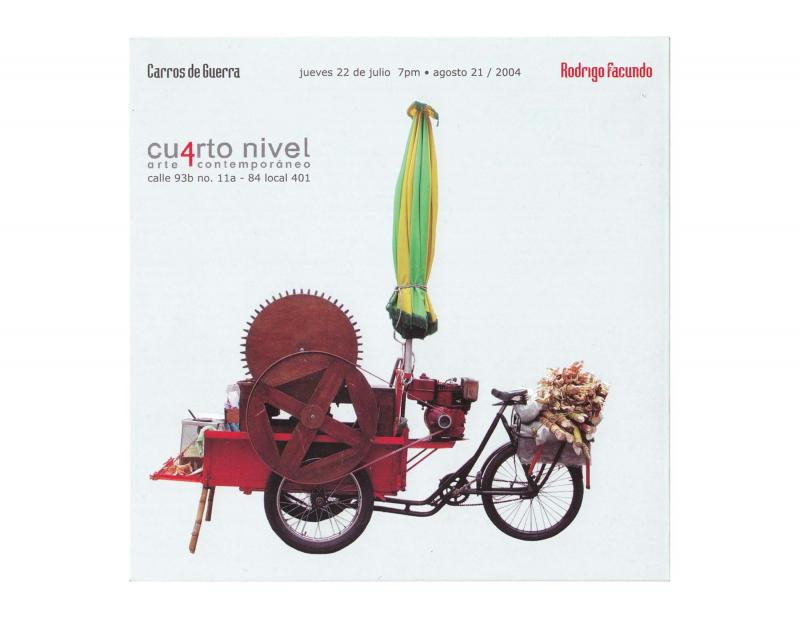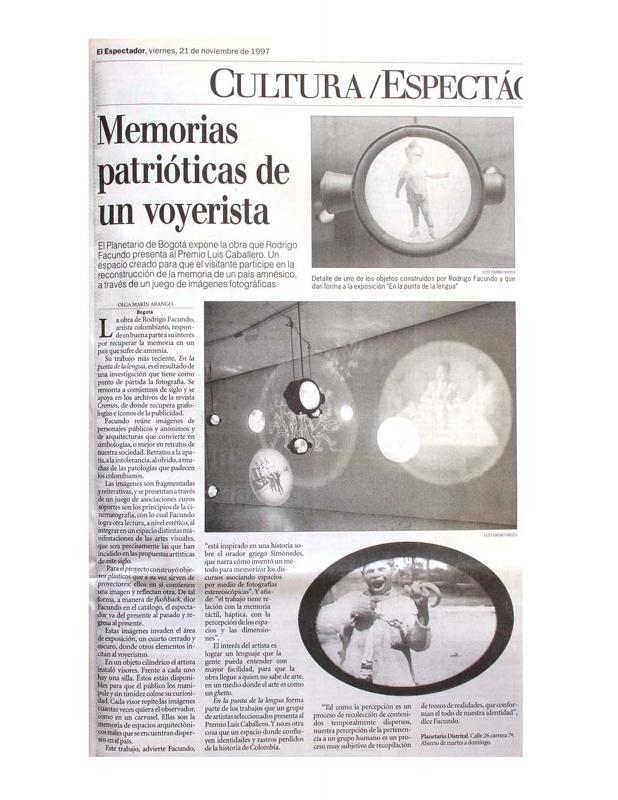This essay was written by Rodrigo Orrantia (b. 1977) as his master’s thesis for his degree in the history and theory of art and architecture (2003). It analyzes the visual and conceptual resources that the Colombian artist Rodrigo Facundo (b. 1958) used in his installation En la punta de la lengua (1997). Bit by bit Orrantia exposes them as mechanisms for the reconstruction of individual and collective memories, as required for the public acceptance and specialized reading of the artist’s work [see doc. no. 1131288, and doc. no. 1130308]. Orrantia also provides an exhaustive description of the objects and their positions in the installation at the second edition of the Luis Caballero Prize. Based on the division of the work into three themes that Facundo subtitled in the exhibition catalogue as “gente” [people], “lugares” [places], and “pensamientos” [thoughts], Orrantia identifies connections between the history of photography and the artifacts used in Facundo’s work. And he does so by stressing the three-dimensional sensation produced by the stereographic images of the subtheme “lugares,” describing them as the sensitization of tactile memory in the photographs.
Orrantia quotes Facundo, who alludes to the didactic nature of the exhibition by disclosing his awareness of the “place” of the photographs and the sociopolitical “place” occupied by the exhibition. It is interesting to note how Orrantia describes the historical experience of Simonides of Ceos (556 BC–468 BC) in order to create one of the first mnemonic processes based on space, which allows him to analyze the visual exercise proposed by Facundo to activate personal memories based on a recognition of images of places proposed as though from a collective memory. What should be added here are the theories on place and non-place developed by Marc Augé (b. 1935) in his book Non-Places: Introduction to an Anthropology of Supermodernity (1992; English translation 1995). Orrantia’s analysis describes the “place” as an identity space and the “non-place” as a transit space. This brings up the issue of changing the non-places to places (in the work) by removing the protagonists in the photographs, an exercise that prompts a greater awareness of the presence of the spaces in the images. The appendix—an interview with Facundo—provides important clarifications and explanations about the work, and allows the artist to discuss his theoretical and artistic approach to the construction of the work.
Rodrigo Orrantia, the Colombian artist and theoretician, is a graduate of the Universidad de los Andes and holds a master’s degree in the history and theory of art and architecture from the Universidad Nacional de Colombia. He is currently (in 2010) a freelance artist. He lives and works in New York State.
Rodrigo Facundo is a Colombian artist. He is a graduate of the Universidad de los Andes and has a master’s degree from the University of Illinois. He received a special mention at the second Luis Caballero Prize (1997), and at the V Salón Regional Bogotá region in 1998. He is currently (in 2010) a teacher on the art faculty at the Universidad de los Andes in Bogotá.


